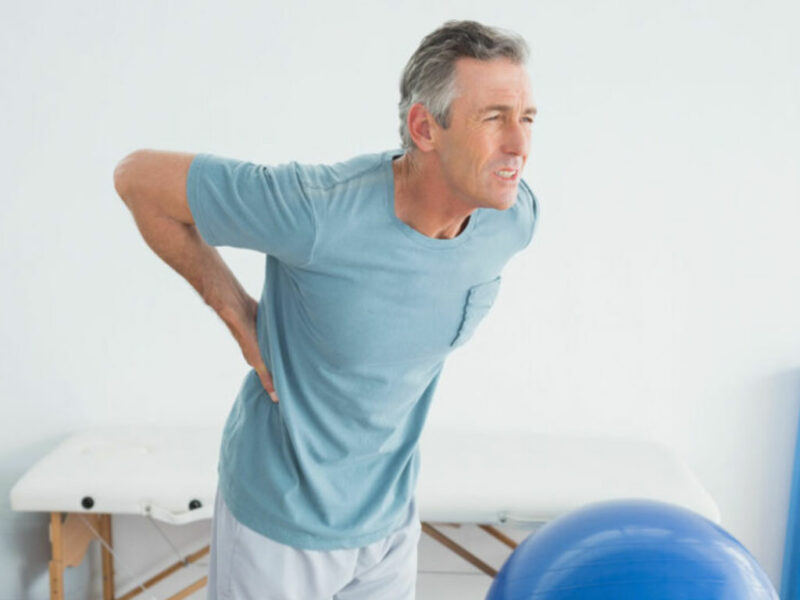If you have a sprained knee, ankle, shoulder, or finger, you can’t just sit and wait for it to recover so you can go on your business after a short rest. If you do nothing, the pain will increase, and you won’t be able to use the injured body part for a long time.
This article will guide you through the process of treating sprains, and show you the best treatment options:
- Treating sprains in 4 steps
- Non-steroidal anti-inflammatories
- Beyond non-steroidal supplements
- Natural active ingredients can also help
Treating sprains in 4 steps
You are walking on an uneven surface. You don’t pay attention, step in a hole, and suddenly you feel a sharp pain in your ankle. Has it ever happened to you?
At first, you don’t even know if it’s a strain, a sprain, or a dislocation, but it really doesn’t matter. Here’s what to do:
- Rest the injured limb. You have to make sure not to put pressure on the injured body part. In case of an ankle or knee injury, ask for help so you don’t have to stand on your injured leg, and try to rest it as soon as possible.
- Icing. Icing reduces pain and swelling, so you should start as soon as you can. However, make sure not to ice the limb for more than 15-20 minutes at a time, but you can repeat the process up to 8 times.
- Compression. You can wrap the injured limb with an elastic bandage, but it shouldn’t be too tight.
- Elevation. It ensures proper circulation and also reduces pain.
In English, the 4 steps of treatment are summarised with the acronym RICE to make it easier to remember what and how to do when an accident happens. I have done the steps above, what else can I do?
Non-steroidal anti-inflammatories
To reduce pain and inflammation, you need to use anti-inflammatory agents. It can be a tablet, but these non-steroidal anti-inflammatory drugs (NSAIDs) such as diclofenac or ibuprofen can have several side effects, even though they are over-the-counter drugs. The most common side effects cause stomach and intestinal mucosa problems, so taking these can lead to serious damage in those who are sensitive, especially in the long run. An alternative to oral preparations is the use of anti-inflammatory creams, gels, and patches.
The anti-inflammatory active ingredient is absorbed through the skin, so they are effective in the treatment of dislocation, strains, and dislocations. Plus, you can avoid the side effects that oral preparations have. Creams, gels, and patches can be just as effective as anti-inflammatory drugs, so you should try them first. If they aren’t effective enough, you can still take anti-inflammatory drugs. An additional advantage of anti-inflammatory patches is that the active ingredient is absorbed gradually, for over 12 hours.
Creams should be applied to clean, dry, intact skin. As a side effect, redness or burning pain may develop at the site of treatment. You should stop using the creams if the side effects are severe.
Beyond non-steroidal supplements
Preparations containing camphor, menthol, and capsaicin enhance blood circulation in the skin and are commonly recommended for treating mild injuries. Nicoflex Medi Forte cream contains capsaicin and ethyl nicotinate, and is primarily intended for use in cases of sprains and muscle strains. Its effect is based on stimulating blood flow in the skin tissue.
For mild strains and sprains, the cream can be used in combination with cold therapy. Once the acute phase has passed, it is also suitable for use during warm-up. By increasing blood flow and promoting muscle relaxation, it may help reduce the risk of further injuries.
Natural active ingredients can also help

In case of mild injuries, you can use herbal creams to reduce pain and inflammation.
Chamomile has analgesic and anti-inflammatory effects, so it can be of great help with sprains or strains.
Comfrey stimulates the blood flow, thereby reducing swelling and bruises.
Arnica has anti-inflammatory and tissue regenerating effects, so an arnica flower compress can be very effective.
St. John’s wort helps regenerate cells and speed up the healing process.
Thus, depending on the degree of the injury, you have several tools that can help or even speed up the healing process. Also, you shouldn’t put away creams with natural active ingredients even after you have recovered from the injury, because if you use them regularly as a muscle relaxer or warm-up cream, they can help prevent further injuries.

